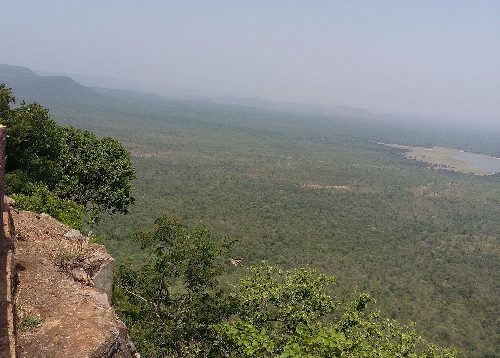The Nagarjunsagar-Srisailam Tiger Reserve (NSTR), sprawling across the rugged Nallamala Hills, continues to stand as a monumental pillar in global wildlife conservation, officially holding the title of India’s largest tiger reserve by area.
Spanning a massive geographical expanse of approximately 3,728 square kilometers of core and buffer zones across five districts in the states of Andhra Pradesh and Telangana, NSTR is a crucial habitat for the critically endangered Bengal Tiger.
While a handful of reserves globally might exceed NSTR’s total forest area, NSTR boasts the largest contiguous protected area dedicated specifically to tiger conservation under Project Tiger. Its enormous size is critical for maintaining a healthy and genetically diverse tiger population, allowing the big cats large territories essential for their survival.
The reserve is defined by:
- Rugged Terrain: The spectacular landscape features plateaus, deep gorges, and valleys carved by the perennial Krishna River, which flows through the reserve for over 270 kilometers.
- Diverse Ecosystem: The Nallamala’s tropical dry deciduous forests are a biodiversity hotspot, home not only to the majestic $\textit{Panthera tigris}$ but also to leopards, Indian wild dogs (dhole), sloth bears, sambar deer, and a variety of endemic flora.
A unique challenge for NSTR lies in the presence of the revered Srisailam Temple, a major pilgrimage site, located within its core area. This intersection of the sacred and the wild often leads to management complexities, particularly regarding high pilgrim traffic, plastic pollution, and human-wildlife interaction.
Forest authorities are working in collaboration with temple administration and local communities to implement sustainable practices, control vehicular movement, and mitigate human pressure, aiming to protect the fragile ecosystem without compromising the cultural significance of the site.
Recent census figures have shown encouraging stability in the tiger population, a result of enhanced protection measures, anti-poaching strategies (including the use of smart patrolling protocols like M-STrIPES), and successful habitat restoration efforts by the Forest Department.
“Nagarjunsagar-Srisailam is more than just a large area; it is a repository of genetic diversity and a symbol of India’s commitment to saving its national animal,” commented a spokesperson for the National Tiger Conservation Authority (NTCA). “The sheer size of this reserve is our greatest defense against extinction.”






